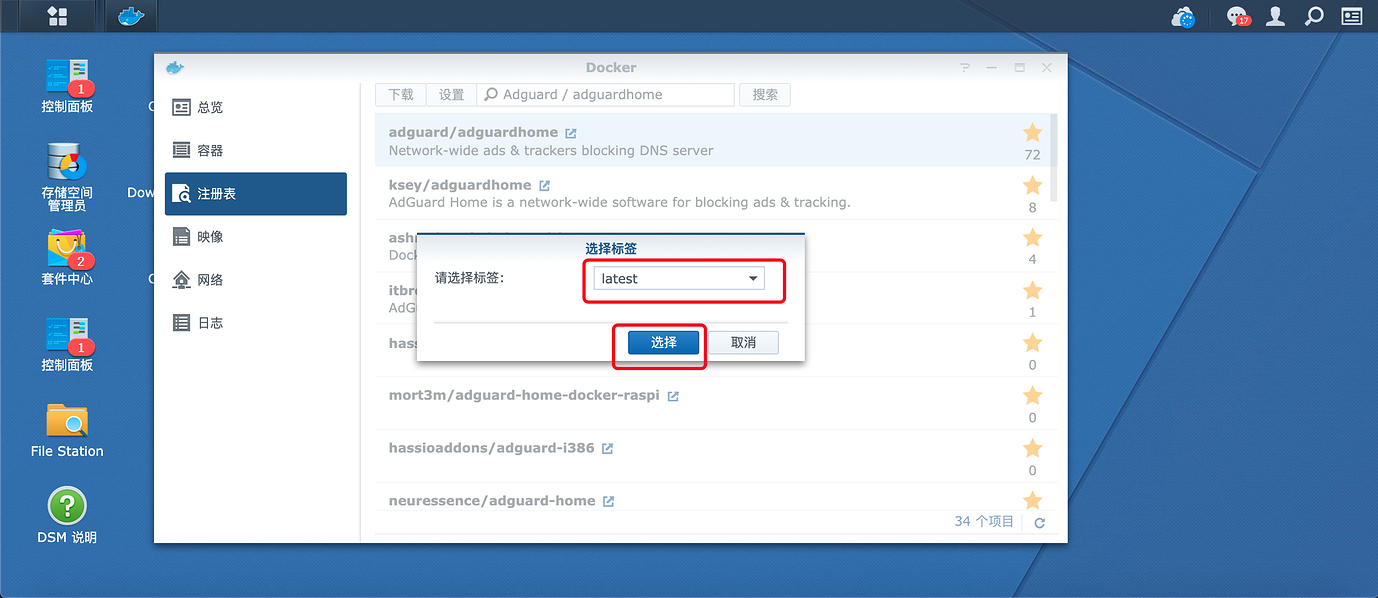

- ADGUARD HOME DOCKER HOW TO
- ADGUARD HOME DOCKER INSTALL
- ADGUARD HOME DOCKER UPDATE
- ADGUARD HOME DOCKER SOFTWARE
- ADGUARD HOME DOCKER PASSWORD
Run the following command first: apt update In this post, I'll use the automated installation script. You can use Docker, SnapStore, download and run it manually. There are multiple options of installing AdGuard Home.

ADGUARD HOME DOCKER INSTALL
Once you've successfully connected to your server, you'll see a command line like this.įinally, we're ready to install AdGuard Home!
ADGUARD HOME DOCKER SOFTWARE
If you're a Windows user, you may need to install additional software (for instance, Putty) for that or use WSL. If you're a Linux or a macOS user, just open the Terminal and print ssh (replace ipaddress with the IP address of your new server) to connect to your new server. It will take 30 seconds for the server to be created, and it's ready to be used!
ADGUARD HOME DOCKER PASSWORD
Password authentication is available, but I strongly suggest using SSH key authentication. The last step is to configure authentication. You won't need a powerful server for your private AdGuard Home, so choose the cheapest tariff available. I prefer Debian 10, but generally, AdGuard Home can run on anything. DigitalOcean calls servers "Droplets," so just click "Create Droplets," and let's get to it.įirst, choose the OS. Now, let's proceed and finally rent a server. Now, for my small personal side-projects, I prefer to use either DigitalOcean or Vultr, but you can choose whichever hosting provider you prefer. It has a public static IP address, and you can connect to it from anywhere. Once you have a domain name, we're ready to get to the next step - rent a public cloud server.Ī cloud server is basically a virtual machine that runs on some hosting company infrastructure. Take some time to find a name that you like, and you're good to go! To name a few:, Google Domains, Namecheap. For this, I prefer to use GoDaddy, but there're many more. The very first step would be to register a domain name. I am describing my own setup, your preferences may differ, and that's completely okay. Setting up AdGuard Home in your home network will be a topic for some future articles.ĭisclaimer: most of the steps in this instruction and services that I use can be replaced with alternatives. In this post, we'll focus on the second way. And since this is your server, you'll be in control of your data. Of course, you have to pay for the server (~$5/mo) and the domain name (~$5-10/yr), but now wherever you go, AdGuard Home will continue to do its job. The second way is to install AdGuard Home on a public cloud server, set up encryption (this is a crucial step!), and configure your devices to use your new server. I won't cover this setup in this post, but you can read this instruction. However, once your device leaves the home network (for instance, you take the phone with you and go out), it won't be protected anymore. In this case, it will control all devices in your home network. The first one is to install it at home on some device like Raspberry Pi. There are two "base" ways to set up AdGuard Home.

But stay tuned we're preparing a network-wide blocking solution suitable for everyone just as we speak. If you are not among them, probably this post is not for you.
ADGUARD HOME DOCKER HOW TO
Instead, this is a network-wide blocker, and its purpose is to protect all your devices.ĭisclaimer: in the current state, AdGuard Home is supposed to be used by power users and technical geeks who know what Linux is and how to use it. It's also not a system-wide blocker like AdGuard premium apps. AdGuard Home is not a traditional content blocker that works in your browser. Method 2: SSH docker run -name adguardhome -v /srv/dev-disk-by-label-Files/config/AdGuard/workdir:/opt/adguardhome/work -v /srv/dev-disk-by-label-Files/config/AdGuard/confdir:/opt/adguardhome/conf -p 53:53/tcp -p 53:53/udp -p 67:67/udp -p 68:68/tcp -p 68:68/udp -p 853:853/tcp -p 3000:3000/tcp -d adguard/adguardhomeLet's start with a short introduction of what AdGuard Home is and why we made it. Now you can point individual devices’ DNS to your server’s IP address and things should work from there.

Complete the rest of the pages of installation by just filling in the blanks with basic information. Open a new browser tab and go to Make sure to change port 80 on the first page to whatever port you designated in your Stack. srv/dev-disk-by-label-Files/config/AdGuard1/confdir:/opt/adguardhome/confĬhange port 3000 to whatever port you’d like to use to access the admin interface.Ĭhange the volumes to match wherever you like to put your configuration files.Ĭlick “Deploy Container” and wait a minute for it to deploy. srv/dev-disk-by-label-Files/config/AdGuard1/workdir:/opt/adguardhome/work 80:80/tcp #change this to something like 81:80 if port 80 is already in use Then give the stack a name and copy this in:. The process is simple, so I’ll show you 2 ways to do this. AdGuard is the best way to get rid of annoying ads and online tracking and protect your computer from malware.


 0 kommentar(er)
0 kommentar(er)
